Abstract
By single ascospore isolation, several sets of asci containing eight ascospores were isolated from perithecia of Gibberella zeae. Of these sets, seven were investigated for their ability to produce 8-ketotrichothecene mycotoxins on rice grains. Analyses were made with gas chromatography-mass spectrometry and gas chromatography with 63Ni electron capture detection. Of 56 total isolates, 11 produced nivalenol, 4-acetylnivalenol, and deoxynivalenol, 1 produced nivalenol and deoxynivalenol, 7 produced deoxynivalenol and 3-acetyldeoxynivalenol, 19 produced deoxynivalenol and 15-acetyldeoxynivalenol, and 6 produced deoxynivalenol and both 15- and 3-acetyldeoxynivalenol. The remaining 12 isolates produced nivalenol and 4-acetylnivalenol. All isolates of G. zeae that we examined could produce 8-ketotrichothecenes in this investigation. This report is the first to demonstrate the presence of G. zeae isolates producing both nivalenol and deoxynivalenol. In addition, differences in the production between 3-acetyldeoxynivalenol and 15-acetyldeoxynivalenol are discussed in relation to culture conditions.
Full text
PDF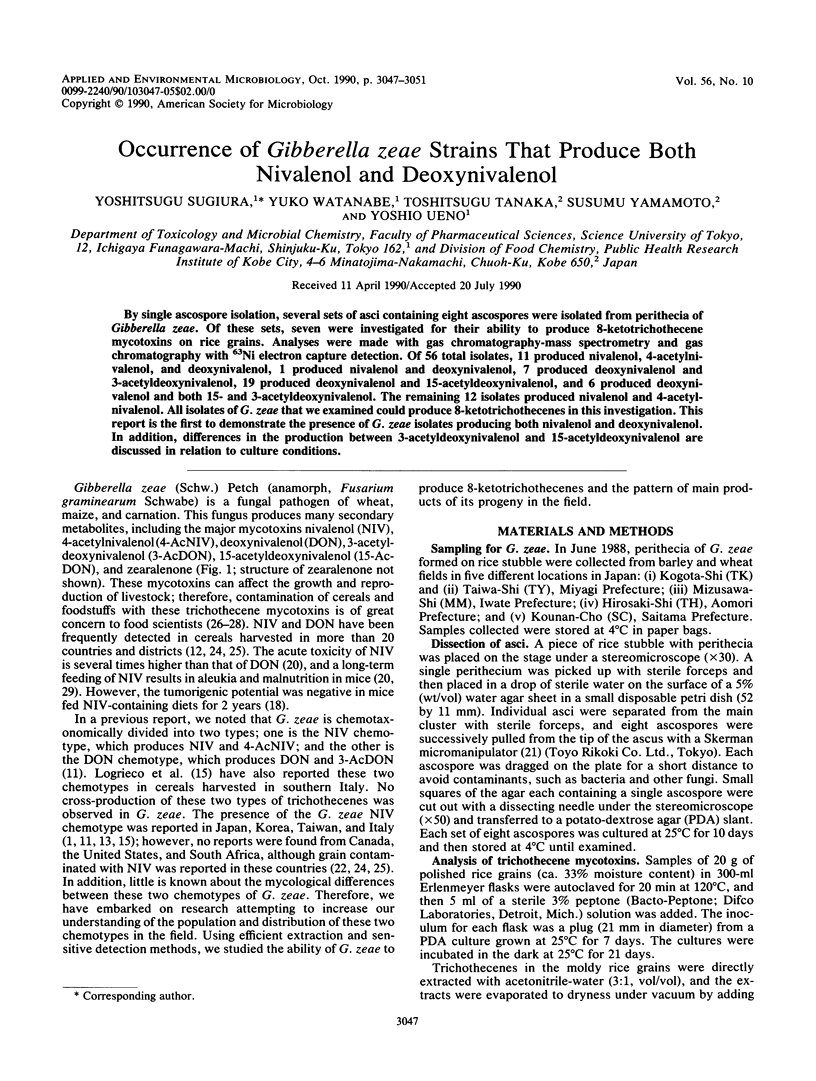
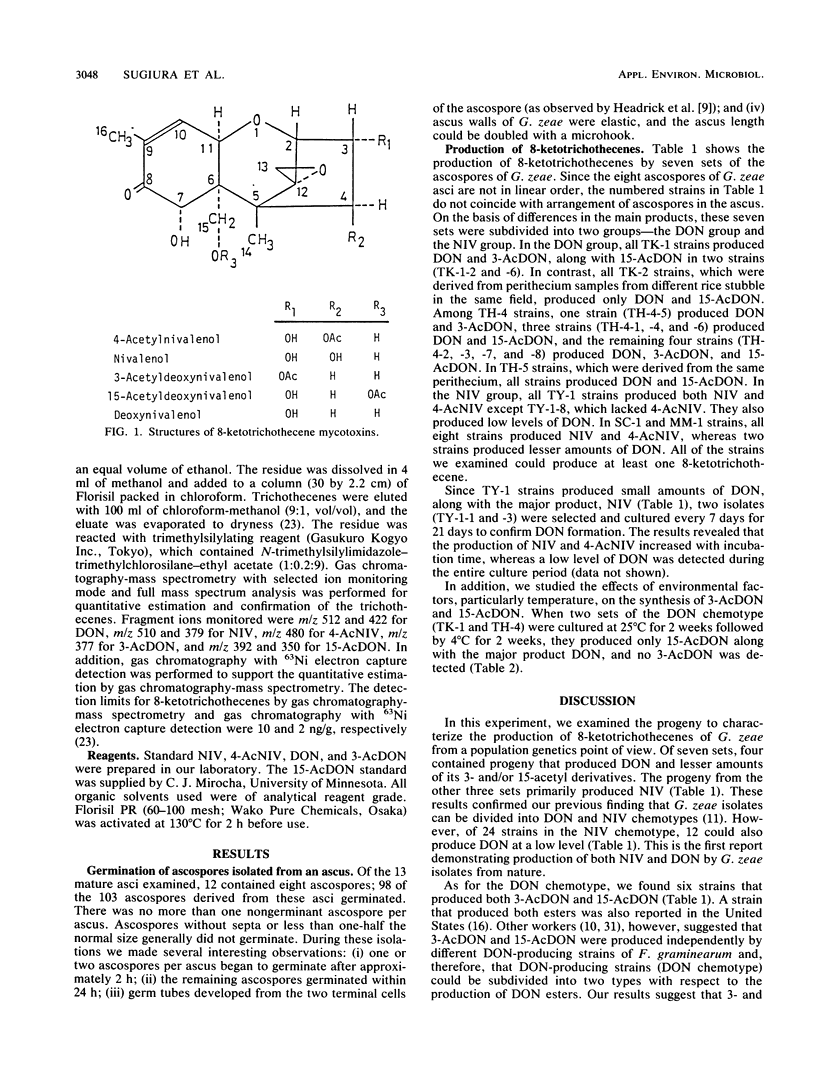
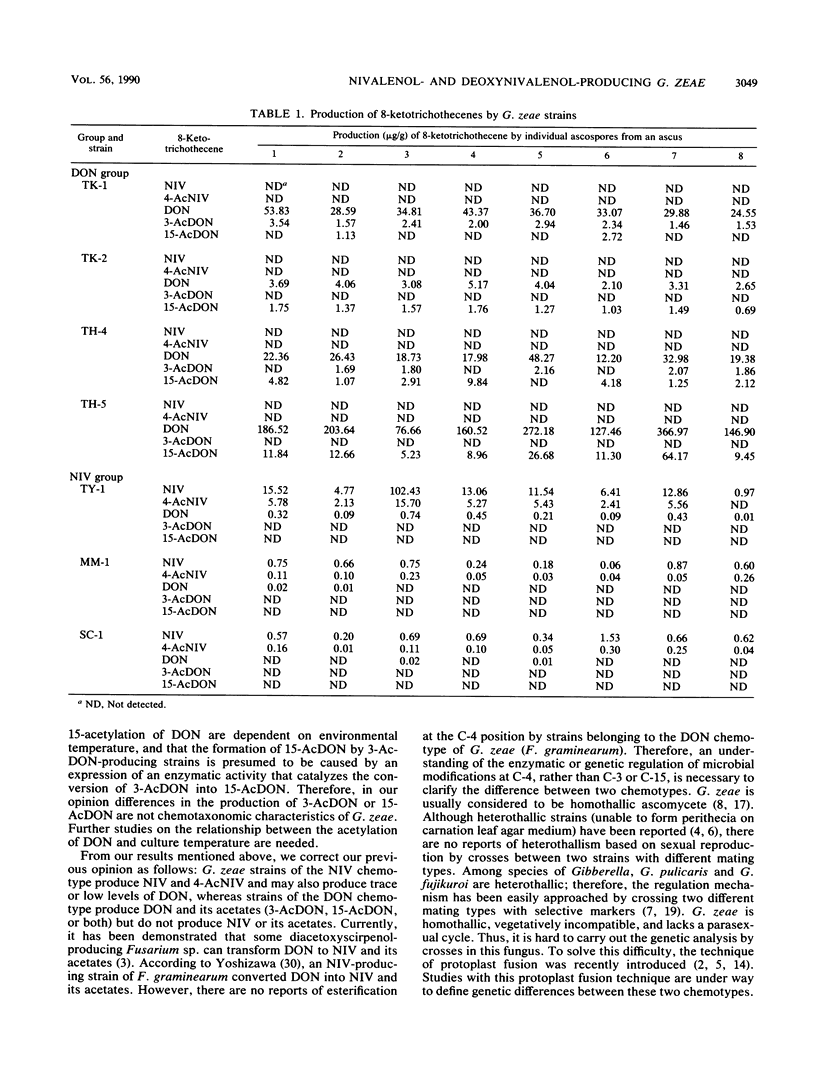
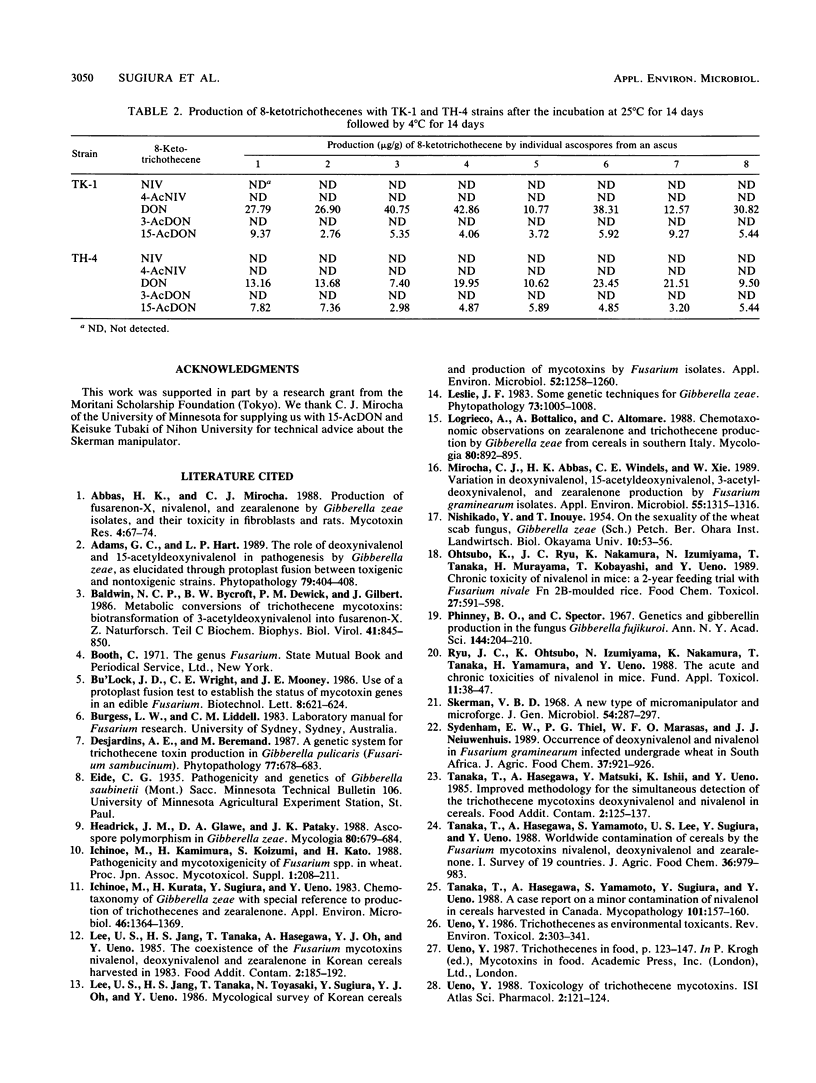
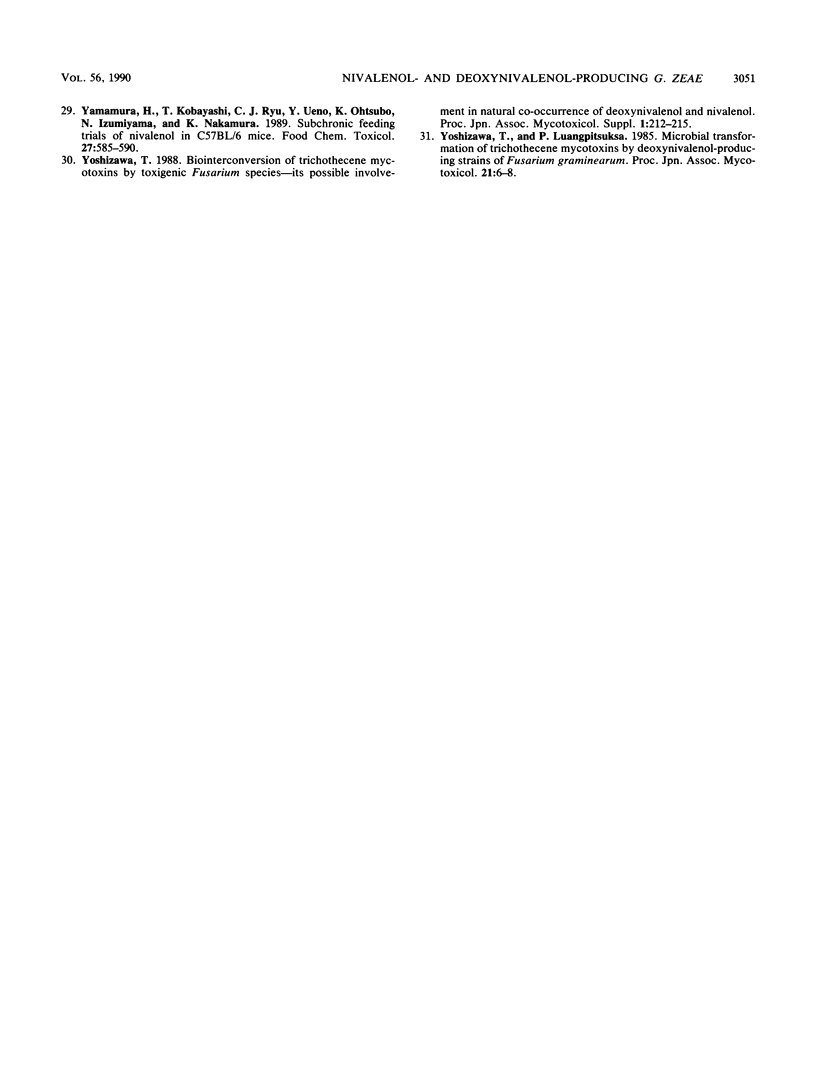
Selected References
These references are in PubMed. This may not be the complete list of references from this article.
- Baldwin N. C., Bycroft B. W., Dewick P. M., Gilbert J. Metabolic conversions of trichothecene mycotoxins: biotransformation of 3-acetyldeoxynivalenol into fusarenon-X. Z Naturforsch C. 1986 Sep-Oct;41(9-10):845–850. [PubMed] [Google Scholar]
- Ichinoe M., Kurata H., Sugiura Y., Ueno Y. Chemotaxonomy of Gibberella zeae with special reference to production of trichothecenes and zearalenone. Appl Environ Microbiol. 1983 Dec;46(6):1364–1369. doi: 10.1128/aem.46.6.1364-1369.1983. [DOI] [PMC free article] [PubMed] [Google Scholar]
- Lee U. S., Jang H. S., Tanaka T., Hasegawa A., Oh Y. J., Ueno Y. The coexistence of the Fusarium mycotoxins nivalenol, deoxynivalenol and zearalenone in Korean cereals harvested in 1983. Food Addit Contam. 1985 Jul-Sep;2(3):185–192. doi: 10.1080/02652038509373542. [DOI] [PubMed] [Google Scholar]
- Lee U. S., Jang H. S., Tanaka T., Toyasaki N., Sugiura Y., Oh Y. J., Cho C. M., Ueno Y. Mycological survey of Korean cereals and production of mycotoxins by Fusarium isolates. Appl Environ Microbiol. 1986 Dec;52(6):1258–1260. doi: 10.1128/aem.52.6.1258-1260.1986. [DOI] [PMC free article] [PubMed] [Google Scholar]
- Mirocha C. J., Abbas H. K., Windels C. E., Xie W. Variation in Deoxynivalenol, 15-Acetyldeoxynivalenol, 3-Acetyldeoxynivalenol, and Zearalenone Production by Fusarium graminearum Isolates. Appl Environ Microbiol. 1989 May;55(5):1315–1316. doi: 10.1128/aem.55.5.1315-1316.1989. [DOI] [PMC free article] [PubMed] [Google Scholar]
- Ohtsubo K., Ryu J. C., Nakamura K., Izumiyama N., Tanaka T., Yamamura H., Kobayashi T., Ueno Y. Chronic toxicity of nivalenol in female mice: a 2-year feeding study with Fusarium nivale Fn 2B-moulded rice. Food Chem Toxicol. 1989 Sep;27(9):591–598. doi: 10.1016/0278-6915(89)90018-5. [DOI] [PubMed] [Google Scholar]
- Ryu J. C., Ohtsubo K., Izumiyama N., Nakamura K., Tanaka T., Yamamura H., Ueno Y. The acute and chronic toxicities of nivalenol in mice. Fundam Appl Toxicol. 1988 Jul;11(1):38–47. doi: 10.1016/0272-0590(88)90268-0. [DOI] [PubMed] [Google Scholar]
- Skerman V. B. A new type of micromanipulator and microforge. J Gen Microbiol. 1968 Dec;54(2):287–297. doi: 10.1099/00221287-54-2-287. [DOI] [PubMed] [Google Scholar]
- Tanaka T., Hasegawa A., Matsuki Y., Ishii K., Ueno Y. Improved methodology for the simultaneous detection of the trichothecene mycotoxins deoxynivalenol and nivalenol in cereals. Food Addit Contam. 1985 Apr-Jun;2(2):125–137. doi: 10.1080/02652038509373534. [DOI] [PubMed] [Google Scholar]
- Tanaka T., Hasegawa A., Yamamoto S., Sugiura Y., Ueno Y. A case report on a minor contamination of nivalenol in cereals harvested in Canada. Mycopathologia. 1988 Mar;101(3):157–160. doi: 10.1007/BF00437032. [DOI] [PubMed] [Google Scholar]
- Yamamura H., Kobayashi T., Ryu J. C., Ueno Y., Nakamura K., Izumiyama N., Ohtsubo K. Subchronic feeding studies with nivalenol in C57BL/6 mice. Food Chem Toxicol. 1989 Sep;27(9):585–590. doi: 10.1016/0278-6915(89)90017-3. [DOI] [PubMed] [Google Scholar]


